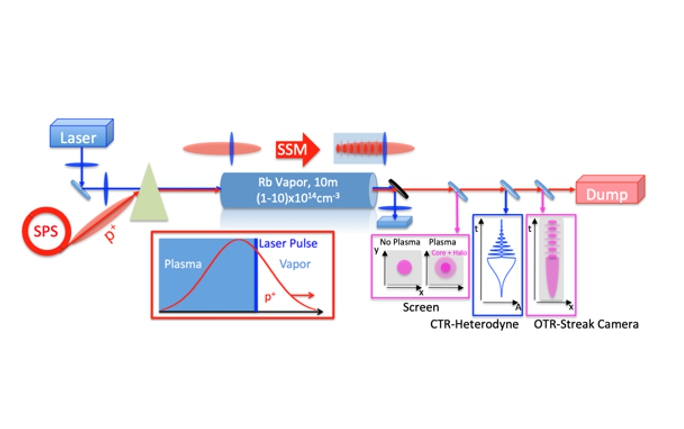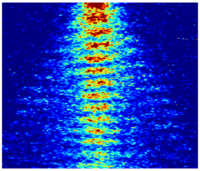New results from AWAKE: Manipulation of Proton Bunch Self Modulation using Plasma Density Gradient

LIV.DAT PhD student Aravinda Perera is involved in the development of enhanced models of beam-plasma interaction, including for the experiment at AWAKE. The Advanced WAKEfield Experiment (AWAKE) is a proton-driven plasma wakefield experiment at CERN. It uses 400 GeV protons from CERN’s Super Proton Synchrotron (SPS) to drive large accelerating fields (~GV/m) in a 10 m long Rubidium plasma target.
For the production of such large fields, AWAKE also benefits from a phenomenon called ‘self-modulation-instability’. It was first numerically demonstrated that a proton bunch interacting with plasma wakefields with a smaller wavelength compared to the bunch length will be modulated into microbunches due to the alternating radial plasma focusing.

Observation of instabilities in the plasma, image PRL.
In its first experimental period, AWAKE accomplished two major breakthroughs: observing this self-modulation-instability and demonstrating electron acceleration riding the waves driven by this modulated proton bunch within an international collaboration including several members of the QUASAR Group.
An article has just been published in Physical Review Letters which reports on new experimental findings on self-modulation-instability under varying plasma density gradients. It shows that a positive plasma density gradient, rather than no or a negative gradient, leads to the increase in the number of proton microbunches, as well as their charge.
These new results will enable AWAKE to achieve larger wakefield amplitudes and hence larger accelerating gradients for the upcoming experimental period which is also known as AWAKE Run II.
Further information:
F. Braunmueller et al., “Proton Bunch Self-Modulation in Plasma with Density Gradient”, Phys. Rev. Lett. 125, 264801 (2020), https://link.aps.org/doi/10.1103/PhysRevLett.125.264801